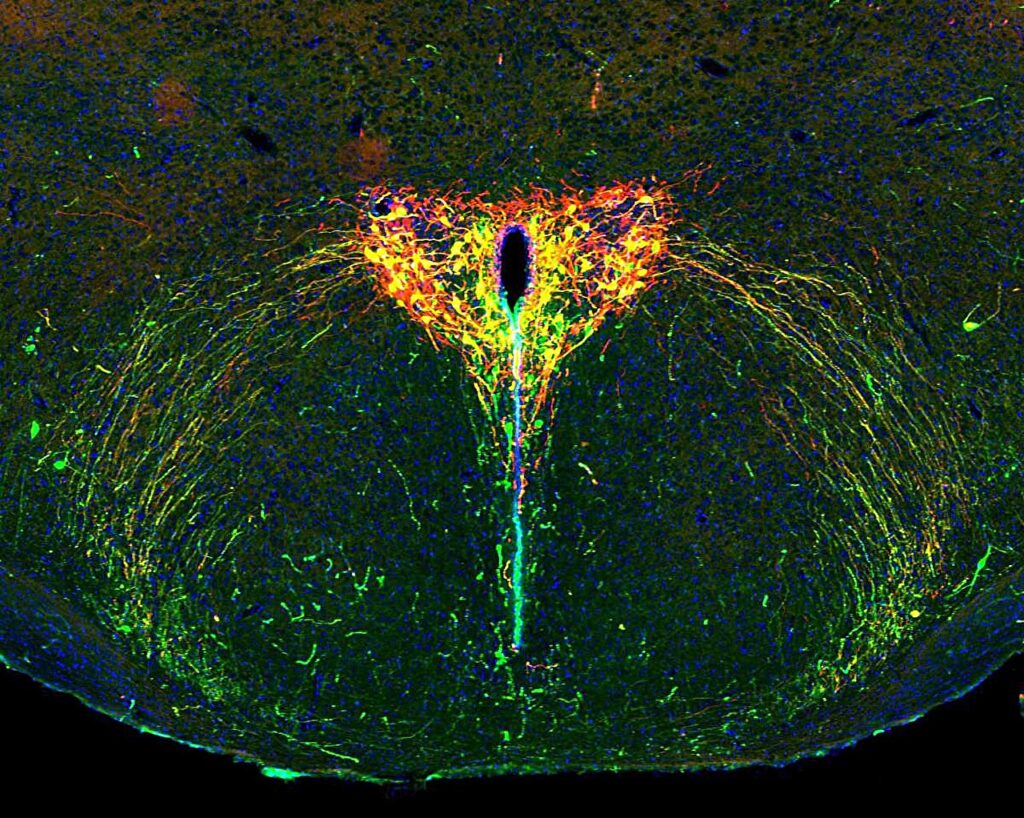
The relationships we form as adults often echo those we had with our parents. According to attachment theory—one of the most influential frameworks in contemporary psychology—this is no coincidence: The attachment between an infant and a primary caregiver shapes the baby’s future social ties. Despite its significance, the biological mechanisms underlying childhood attachment remain largely elusive, primarily due to the challenges of studying the young brain in natural conditions.
In a groundbreaking development, scientists in Prof. Ofer Yizhar’s laboratory at the Weizmann Institute of Science have devised a new, noninvasive research method. This technique allows for the silencing of selected nerve cells deep within the brains of mouse pups without disrupting their natural behavior. This advancement has enabled researchers to explore the role of oxytocin—a short protein released from nerve cells in the brain—in shaping social behavior from an early age.
Understanding Oxytocin’s Role in Early Development
Oxytocin, often referred to as the “love hormone,” was traditionally thought to promote sociability in adults. However, recent findings published in Science reveal that its role is far more complex. The hormone not only influences adult behavior but also plays a crucial role in the social development of young mammals, potentially underlying emotional differences between males and females that emerge early in life.
Research has shown that young mammalian brains, including those of human children, are particularly sensitive to oxytocin. In brain regions associated with sensory processing, emotional regulation, and social behavior, the number of oxytocin receptors peaks during early childhood: around ages 2 to 3 in humans, and 2 to 3 weeks in mice. Some studies have even linked oxytocin deficiency to childhood autism, highlighting the hormone’s importance in early development.
Innovative Techniques Illuminate Brain Activity
To better understand oxytocin’s impact, Dr. Daniel Zelmanoff and his team at Yizhar’s lab developed a noninvasive technique to probe specific nerve cells in the young brain. As pioneers in optogenetics—a technology that uses light to switch individual cells on or off—they created a method where the targeted brain cells of mouse pups are infected with an engineered virus. This virus introduces a foreign gene encoding a light-sensitive protein, which can “turn off” the nerve cell when exposed to light.
“This new method allows us to peek inside the brain without disturbing the pups’ everyday lives, making it a powerful tool for studying nervous system development,” explains Yizhar. “It is especially useful for studying oxytocin because this hormone’s effects depend on social context—and our method lets us switch off the oxytocin system on demand, only during the exact situation we want to study.”
Parental Separation and Its Impact on Brain Development
The researchers focused on oxytocin’s role during the temporary separation of a mouse pup from its mother and their reunion a few hours later—a situation familiar to every parent of a young child. During separation, increased oxytocin activity was observed in the pup’s brain, which returned to normal upon reunion with the mother.
Pups with an active oxytocin system during separation gradually adapted to being alone in an unfamiliar environment, producing fewer ultrasonic vocalizations—the mouse equivalent of a baby’s cry. In contrast, pups whose oxytocin system was silenced did not adapt; they continued emitting distress calls at the same rate until reunited with their mothers. These findings suggest that the “love hormone” also plays a critical role in coping with loneliness.
“We discovered that mouse pups need an active oxytocin system in order to adapt to separation from their mothers,” says Yizhar. “This suggests that the oxytocin system plays a role not only in the brain of the parent, which was already known, but also in that of the infant.”
Gender Differences in Oxytocin Activity
In the next stage of their research, the scientists explored whether oxytocin’s role in pups differs between the sexes, as it does in older animals. They found that female pups with an active oxytocin system emitted many more ultrasonic calls when reunited with their mothers than females with silenced oxytocin systems, whereas the calls of male pups were unaffected by the status of their oxytocin systems.
“This is the first sex difference observed in oxytocin system activity at such an early stage of development,” Yizhar notes. “It may offer a clue as to why males and females diverge in their social behaviors and emotional worlds long before puberty.”
Implications for Human Development
The implications of this research extend beyond the realm of animal studies. Understanding how oxytocin influences early development could provide insights into human social behavior and emotional health. The findings may also contribute to developing interventions for conditions like autism, where oxytocin’s role is already being explored.
As researchers continue to unravel the complexities of the developing brain, the new method developed by Yizhar’s team offers a promising tool for future studies. By allowing scientists to observe and manipulate neural activity without disrupting natural behavior, it opens new avenues for understanding the intricate dance of hormones and neurons that shape who we become.
While more research is needed to fully understand the implications of these findings, the study marks a significant step forward in our understanding of early brain development and the biological underpinnings of attachment theory.






